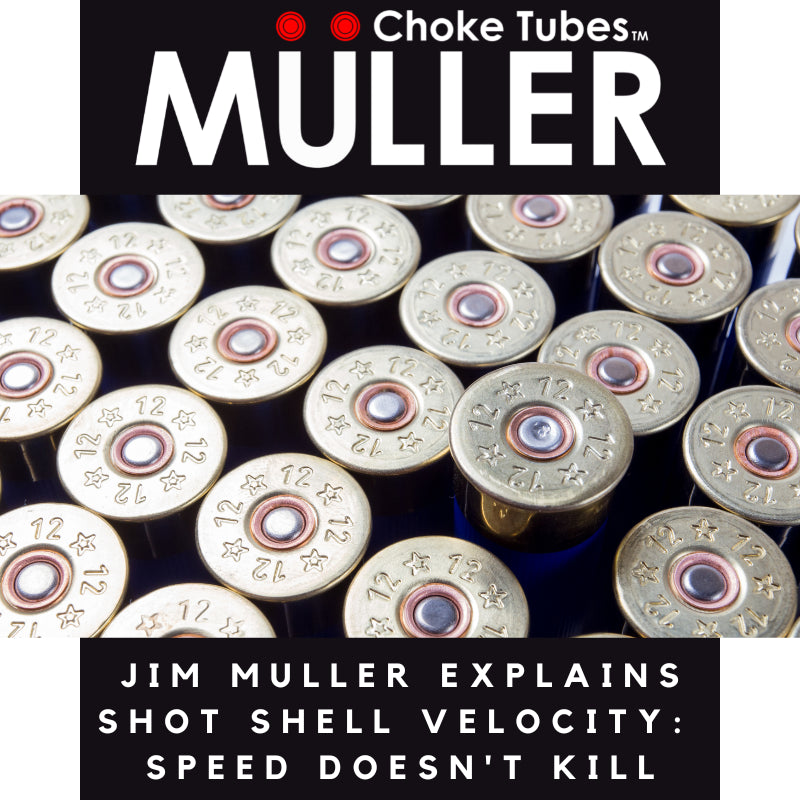Your Cart is Empty

Here is my experience regarding shot shell velocity in a nutshell: the faster you push the payload the more you and your accuracy will suffer.
With today’s marketing propaganda being all about “Hyper Sonic Velocity” and “Speed Kills” slogans, target shooters and especially waterfowl hunters are being sold a bill of goods, resulting in a situation that is not only negatively effecting their shooting capabilities, but is also hurting our health and longevity for the sports we love.
Here’s what’s happening: The best patterning loads are between 1145 - 1250 feet per second (FPS). The worst are ones that exceed 1350, and the new hunting loads that exceed 1400 are outright worthless.
The slower the payload leaves the muzzle the better, because you get fewer damaged pellets which means you have fewer “flyers,” the damaged pellets that leave the effective pattern due to wind, G-forces, and gravity. (Flyers and blown patterns are also caused by over choking, especially in hunting loads, which we will discuss later in the article.) Less velocity also means less felt recoil, less perceived recoil, less muzzle flip, faster recovery of equilibrium for follow- up shots, fewer blown rotator cuffs, fewer neck problems—not to mention lower ammunition costs.
There is a second reason that faster loads are not always better. The faster the load starts out, the faster it spreads out. When you have a really fast target and a small window of shooting opportunity--such as a clay target screaming thru trees or a rabbit target bouncing between hay bales within 25 yards---and all you want to do is point and shoot almost right at it, then by all means go shoot a 1500 FPS shell at it because it will get there instantaneously while spreading out your pattern as quickly and violently as possible. But if you want to shoot a 60+ yard crosser on edge you had better opt for the 1145 - 1250 FPS. With the slower load, almost 100% of your pellets will reach the target at 60+ yards due to less deformation on ignition and fewer G-forces upon exiting the muzzle. The pattern of the slower load will also remain tighter for greater distances. To clarify, if you shoot a high velocity shell at a 60+ yard crosser you may end up with only 50% of your original payload getting to the target and of that 50% the pattern is opened up to the point where you may only hit that target with 1 or 2 pellets which will probably not be sufficient to break it. But if you were shooting a slower payload, that target would get hit by 4 or more pellets, giving you a very solid, consistent break every time.